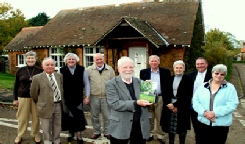
 Local Business, Food, Accommodation
History Group
Local Events
Local Business, Food, Accommodation
History Group
Local Events




 Summary of Castle Rising
Summary of Castle Rising
















Many of the subjects below are covered in more detail within this website. Our research continues as ongoing projects with updates as more interesting information reveals itself.
Iron
Trade in Rising or Castle Rising as it now known possibly started in the late Iron-
Salt
Another major industry was Salt production however this is not evident for the Roman period but well marked in the landscape for the Saxon period and continuing on in to the Medieval periods. Domesday records provide an amazing insight for the period Saxon to Norman transition. Much of the salt was traded and taken by sea.
Silver Carr
In recent years a paper was produced arguing the Roman’s were excavating stone from an area close to Castle Rising. Recently this has been confirmed during a channel 4 Time Team dig in 2012 at Brancaster in which members of our group were involved. The Romans were excavating Silver Carr (greyish white stone) most likely from an area named on old maps as “white hills” in Castle Rising. (Small quantities are still found) This building stone was used in construction of the Roman Shore fort at Brancaster during the late forth century indicated by the evidence of recovered coins. The silver carr which is generally only found in our geographical area is also seen in the fabric of Reedham church Norfolk which was on the coast within the Roman period indicating a lost roman building within the Reedham area. This evidence would indicate a port-
Barnack Stone
Stone was brought in from Northamptonshire via the River.Nene or River Wellend for the construction of the castle and church during the Norman period from a estimated period between 1143-
Mills
Mills have been major part of Risings history with early records dating back to the Saxon period where the river Babingley has been exploited to drive water wheels to grind corn, power machinery producing paper, flax amongst things. The mills were very important and sometimes essential to many of the villagers that lived in parishes seated around Castle Rising.
Carrstone (Small Carr)
Carrstone brown/orange in colour was quarried locally near Royden Common and is found in some of the older buildings in Castle Rising see geology section
Sand
The quality of the silica sand here has excellent properties for glass making, building, casting maulds plus many other uses. Was heavily exploited in the Victorian era. We also have discovered records of the use of the sand dating back to 1340
